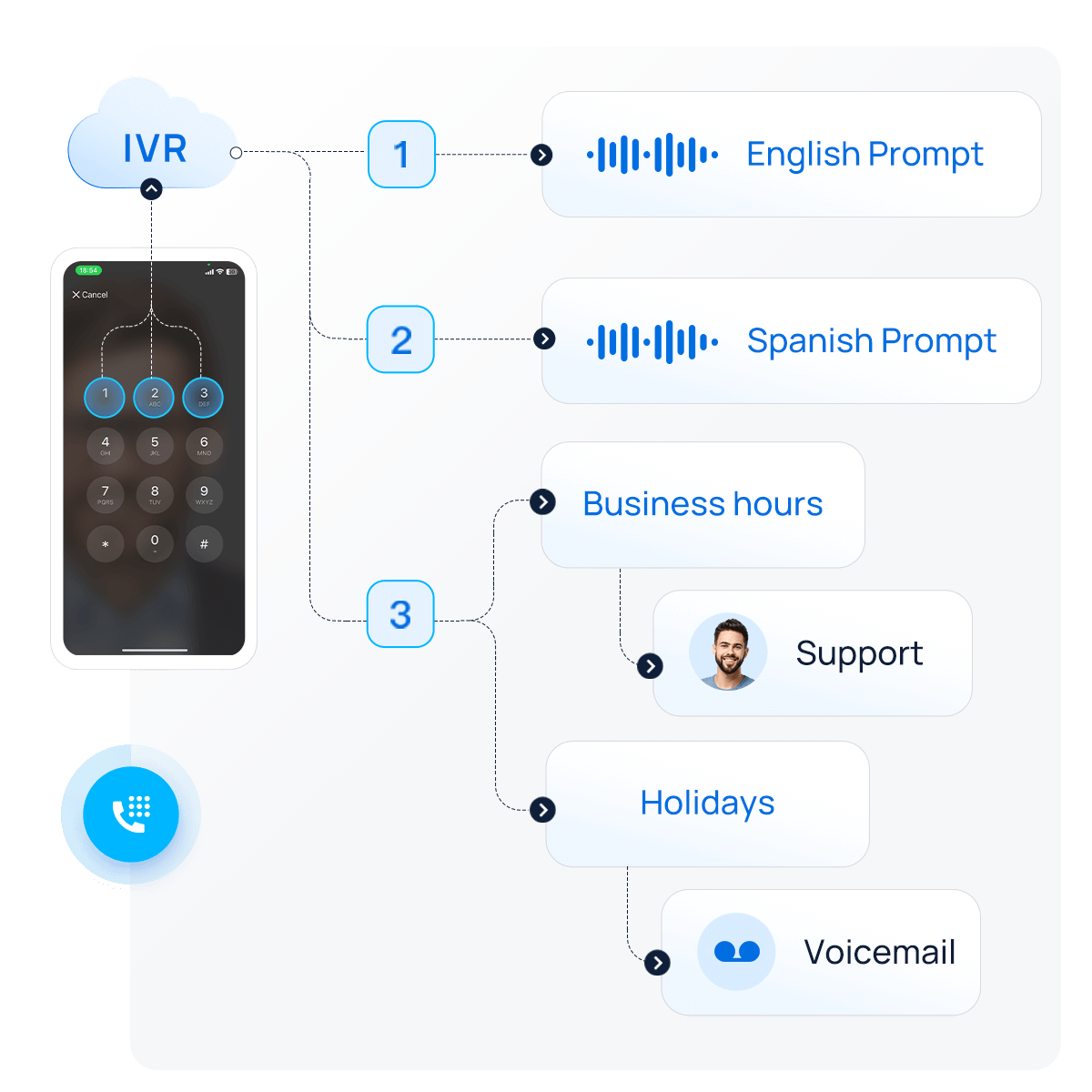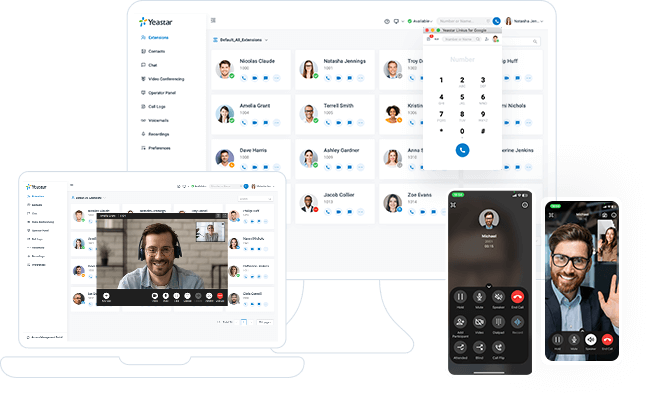In this era of high-speed connectivity, businesses receive a flood of incoming calls from customers seeking immediate responses to their queries. However, not all business have a group of live agents to answer all question. That’s where Interactive Voice Response, or IVR, comes into play.
What is Interactive Voice Reponse (IVR)?
Interactive Voice Response (IVR) is an automated telephone system feature that enables callers to receive or provide information, or make requests using voice or keypad dial-tones (DTMF), without speaking to a live agent. When you contact a company for the first time, you will typically encounter a voice menu, which is part of the IVR system.
The main function of an IVR phone system is to collect information or direct calls to the appropriate destination. It’s commonly used in customer service and call center automatic call distribution systems to improve customer experience.
It can provide pre-recorded information, route calls to the appropriate department or agent, process payments,conduct surveys, and more.
By using IVR, we can efficiently handle incoming calls and provide navigation to callers.
Uses of Interactive Voice Response
IVR technology finds extensive applications in various industries such as hospitals, banks, and more to provide 24/7 accessibility. It comes in handy to reduce call wait time especially when a business has high call volumes. Some business processes that IVR can help handle include:
Customer inquiries and support
Call routing and transferring
Account balance inquiries
Automated bill payment
Interactive menu navigation
Order tracking and status updates
Appointment scheduling and reminders
Survey and feedback collection

How does Interactive Voice Response work?
The first step in an IVR is someone making a call. A customer dials your phone number and gets connected to the IVR system. The system greets them with a welcome message and presents a series of options, known as the IVR menu. This menu can be one or several layers deep.
Then, the caller chooses an option in the IVR menu by pressing a button on a touch-tone keypad. The system uses dual-tone multi-frequency signaling (DTMF) to recognize caller requests and route the caller to right individual or department. Some advanced IVR phone systems also support speech recognition (Natural Language Processing technology), which allows the interactive voice response system to recognize customer requests based on the keywords they say.
When a choice is made, the IVR routes the call to a phone extension, department, queue, or message pre-configured in your IVR application. The routing setup can be multi-level, time-based, language-based, or a combination of these factors.

Multi-level IVR
Callers are guided through multiple layers of menu choices. Each menu option in the IVR call flow leads to a submenu of more specific options, allowing them to reach their desired destination more efficiently.
Multi-lingual IVR
Help companies to provide services in multiple languages. After the caller selects a language, the system will play prompt messages in the selected language for enhanced communications.
Time-based IVR
Used for time-based routing. Route callers to different individuals, departments, queues, etc. based on specific time frames, with the same IVR key press event.
What are the benefits of Interactive Voice Response?
With a proper IVR routing configuration, companies can save time and money by speeding up calls and requiring fewer agents to handle customer inquiries. Some other benefits of using IVR software include the followings:

What are the challenges of using IVR?
One significant challenge is navigation difficulty. Complex or unclear menu options can lead to caller frustration, as callers may struggle to find the correct path to resolve their issues. This can result in longer call times or even cause customers to hang up before reaching a resolution.
Another challenge is to provide personalized service. IVR systems, being automated, cannot offer the tailored support that a live agent can, which may leave customers feeling undervalued and dissatisfied.
Further Readings on Interactive Voice Response (IVR)
Related Features & Solutions

Complete Communications Solution
Available both in the cloud and on-premises, Yeastar P-Series Phone System unites calls, video, omnichannel messaging, integrations and more in one simple system for your seamless communications anywhere.
Get started with 30-day free trial
Create your Yeastar phone system in minutes & see what all-in-one communications can do for your business today.
X



